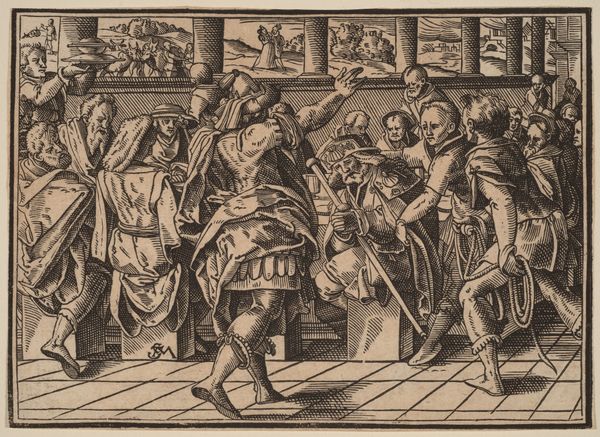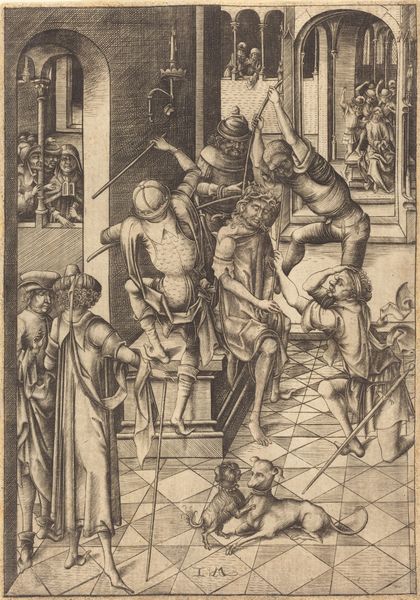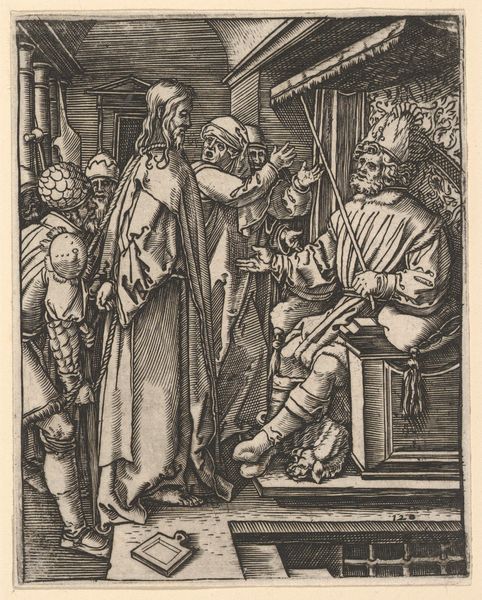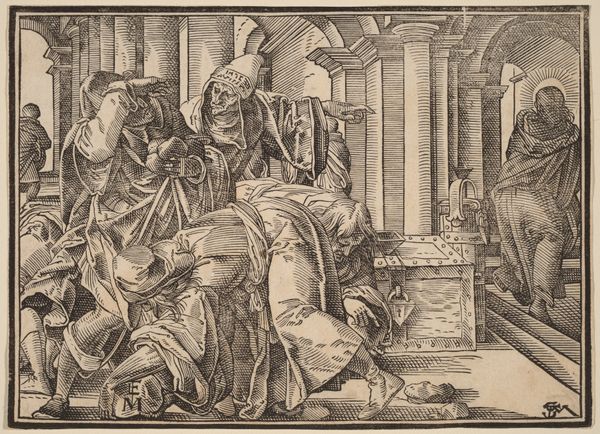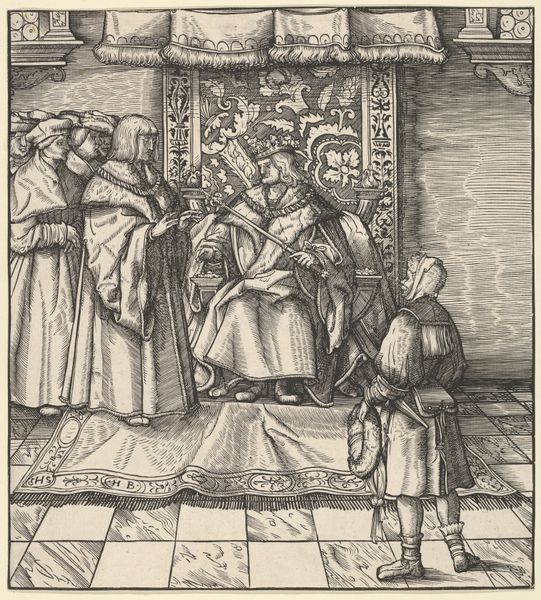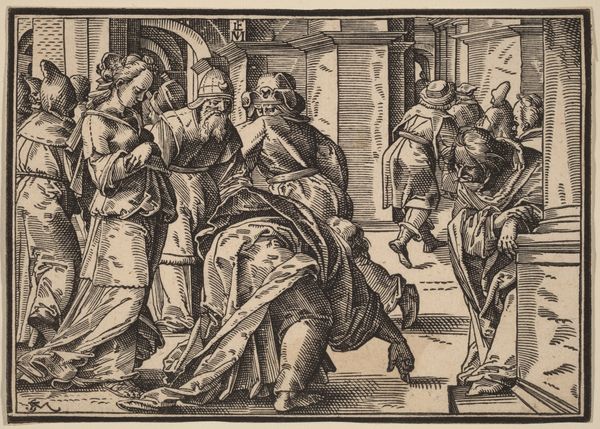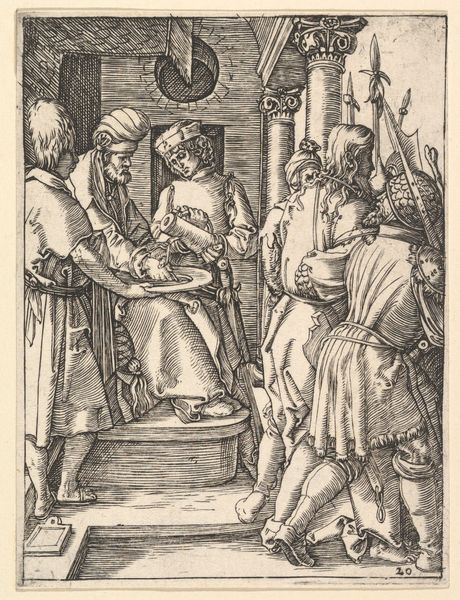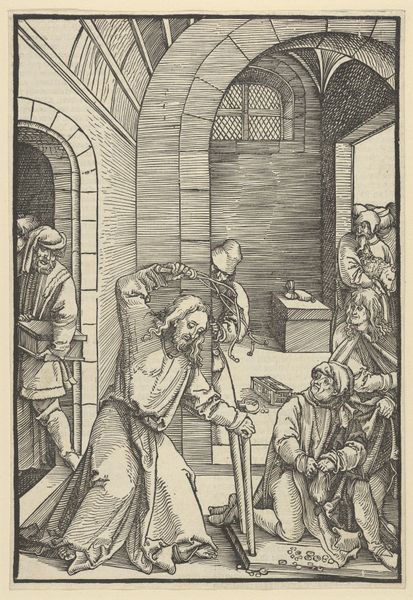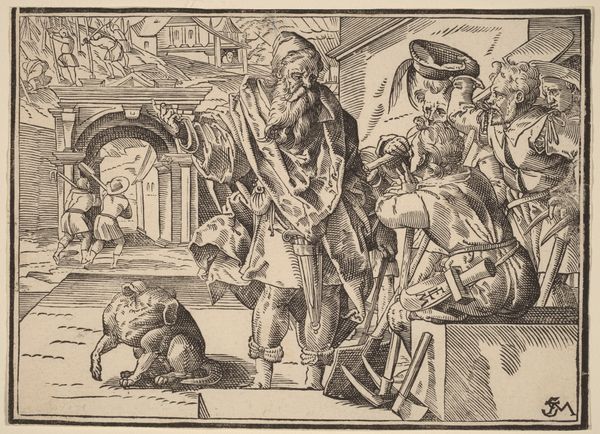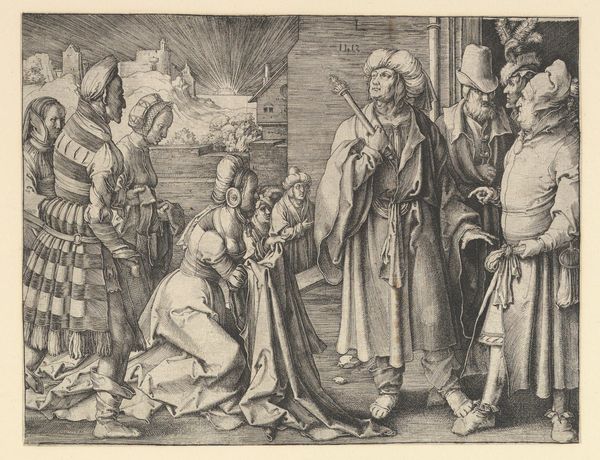
Christ Tells His Disciples of the Last Judgment Possibly 1630
0:00
0:00
drawing, print, engraving
#
drawing
# print
#
figuration
#
11_renaissance
#
line
#
history-painting
#
engraving
Dimensions: sheet: 10.6 x 14.8 cm (4 3/16 x 5 13/16 in.)
Copyright: National Gallery of Art: CC0 1.0
Editor: This is “Christ Tells His Disciples of the Last Judgment,” attributed to Christoph Murer, possibly from 1630. It’s an engraving, so a print, which has such a different feel than painting or sculpture, more like a document somehow. All the linear hatching makes for dramatic light and shadow, and it's such an unusual composition with figures seemingly enacting a ritual of sorts. What strikes you when you look at it? Curator: What immediately catches my attention is the means of production of this image. Consider the labor involved in engraving these intricate lines. It’s a meticulous, painstaking process, requiring immense skill and specialized tools. Notice the precision, the repetition. This isn't just about religious iconography, but about skilled artisanship. The dissemination of religious ideology was only made possible through this labor. How does the medium of print influence the message, do you think? Editor: That’s a good point. Because it’s a print, it can be reproduced, making it more accessible. Maybe this connects to the idea of judgment being something everyone faces? So the medium becomes as important as the message? Curator: Precisely. Now, let’s consider the materials. Copper plates were relatively expensive. Ink, paper – these were commodities, embedded in a specific economic system. Who was commissioning and buying these prints? What social class were they targeting? This image is a commodity circulated within a specific context of consumption. Look closely at how Christ is rendered. Does his portrayal align with standard, say, aristocratic representations? Editor: He looks quite… stern, almost severe, rather than comforting. I'd assumed this style just came with the era it was produced. I hadn't considered his depiction as linked to production and consumption and the impact on society as a whole. Curator: Exactly. It prompts us to examine how art like this functioned within the economy of its time, influencing values and the distribution of power through accessible and reproducible imagery. How might we view the “Last Judgement” in light of early 17th century markets and social conditions? Editor: I see how the production process really shaped the impact of this print. Looking beyond just the image itself, understanding materials and labour has given me a whole new appreciation for its meaning and societal role. Thanks for illuminating this, Curator! Curator: My pleasure. It's through such considerations that we move beyond the surface and delve into the tangible realities behind artistic creation.
Comments
No comments
Be the first to comment and join the conversation on the ultimate creative platform.
